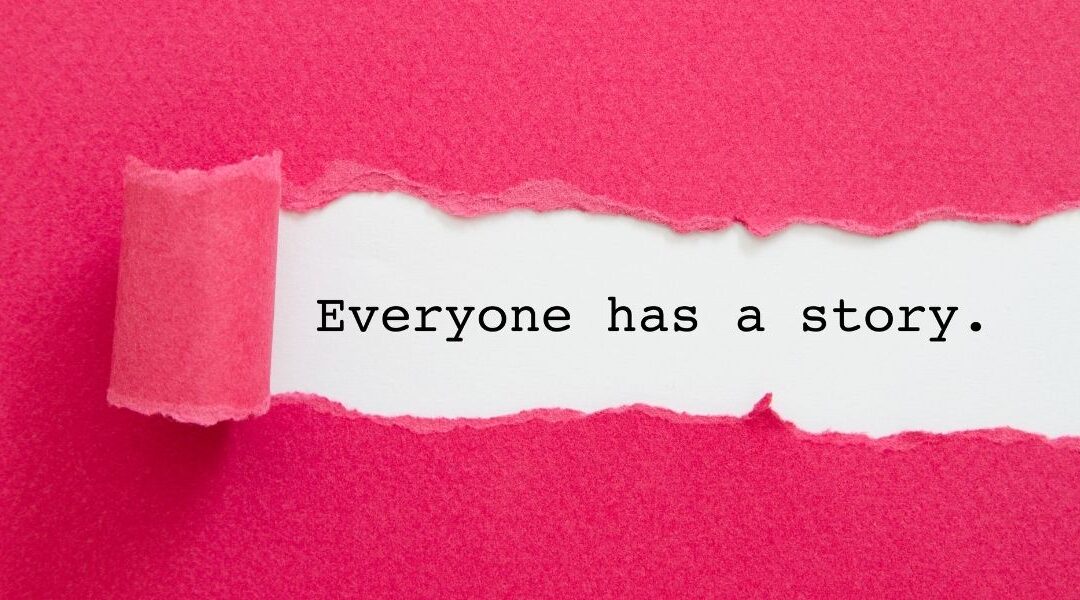It’s common knowledge that people won’t long remember a fact, but they will never forget a feeling.
If you can provoke a feeling – whether positive or negative – you’ve got that person’s full attention. Without it, they will forget you as if they never knew you.
That’s why it’s so important to tell stories about your business. If you don’t think your business has a story, think again. Everyone has a story. It’s just a matter of finding it. But not everyone recognizes a good story and fewer yet can tell it well.
If you want successful content, you will need to tell your brand’s story and how you approach your customers.
First, you need to understand what storytelling is and how to best use it to reach your customers.
How People Think
Why do people remember feelings over facts? If you look at how we talk, it becomes clear. People say, “I am angry” or “You made me angry”.
People don’t usually say “I feel angry” or “You made me feel angry.”
I think that’s because we are what we feel. Our feelings are so part of who we are we don’t instinctively parse them apart, not even in language.
So that’s why the best teachers use stories to teach because stories are more relatable and memorable.
That being the case, how can you use stories to reach your customer?
The first step is to understand what a story is. It’s not just a retelling of events. That’s just as boring as spewing forth facts.
A story has a likable main character, a beginning, middle, end, high stakes and conflict.
When I was a journalist, people would ask me why I didn’t write any positive news. I did. But they didn’t remember it. So when I wrote positive stories, nobody seemed to care. I got little to no feedback.
But if I wrote anything controversial, they remembered that for week if not years later. People sometimes still ask me about stories I wrote years ago and not of them were positive news stories. That’s why the media tends to focus on controversial stories because people gravitate toward them.
So to tell a good story – not just any story – you must have the right elements.
What is your story? Or what is your company’s story? You must ask yourself who you are and what you are trying to do. You might not have ever asked yourself that, but you must to it now.
The big story is why you went into business in the first place. It’s best if you have that story written out and understood.
Starting a business, let alone running one, is a daunting task. So ask yourself:
- Why did you want to go into business?
- Why did you do it when you did?
- How long did you want to before you did?
- What obstacles stood in your way?
- What conflict did you meet along the way?
What are your values? What do you believe? What don’t you believe? What makes you likable? What are your best traits as a company?
You must formulate the main character of the story, which is your business. A good character is a decent person with some flaws. Your business shouldn’t advertise its flaws, but you can’t please everyone in the sense that the branding isn’t about pleasing everyone. It’s about pleasing your target customers who is loyal to you because you are the right fit for them personally.

So, it’s about pleasing some people a lot. Your target customers come back to you because you represent something in you that’s a value that’s important to them. So it’s imperative to define who you are to tell your story.
Another aspect of storytelling is the beginning, middle and end. The beginning of a story is a status quo until something enters the picture to change everything.
The middle is the struggle against the odds, but somehow you make it through all the conflict through your effort and become better along the way.
The end ties up loose ends and reveals what you’ve learned in the end.
This is your story that customers will be able to relate to on a regular basis. You can use this story on your webpage, print collateral and webinars. People will remember who you are if you own your story.
But that’s the big story. What are the smaller stories you can tell about your brand? Remember, a good story has struggle, so you can’t sell a story about something great you did that had no conflict.
Giving money to the food pantry is not a story. There’s no main character, no beginning, middle and end and no conflict.
But if you find a person who had a specific problem that was hard to solve. But your company heard about the problem, wanted to tell help but wasn’t sure how.
Then you found a way that was fraught with conflict and obstacles, and then you were able to solve the problem for this person.
These types of stories happen at companies all the time, but everyone is so busy that they don’t recognize them.
But if you are producing a new product line, you can tell that story. At one time, there was a status quo when you didn’t have this product.
Then you found a reason to create this product. But it likely wasn’t easy. You had to go through many prototypes and found many obstacles along the way. But then you found the right path and produced the final product and you’ve learned something in the process.
That’s an interesting story versus we have a new product that does x, y, z. You can tell your audience why they need this product, how you struggle to bring it to them and how you changed in the process.
They will likely remember that more than a new product that does whatever it does.
You want to use this tactic in social media as much as possible. If you look at the phenomenon of TikTok, a short video platform that’s growing exponentially, it focuses on stories for a lot of its content. While dance is important on TikTok, it’s become a place where stories are told using this same method. The best storytellers on TikTok start off with a bang and then release critical information as they go while unraveling their tales.
Final Thoughts
Storytelling is one of the most important vehicles to impart information. You can use it to build your brands so that your customers will remember who you are. But it’s not merely a retelling of what happens. The best storytellers know what information keep and what to cut for a compelling story. They understand how to increase the stakes and then put it in perspective in the end.
If you want to bond with your customers, remember how important stories are. It’s best if you write your own story so that your customers and employees understand what you are trying to do and can better relate to your company.


